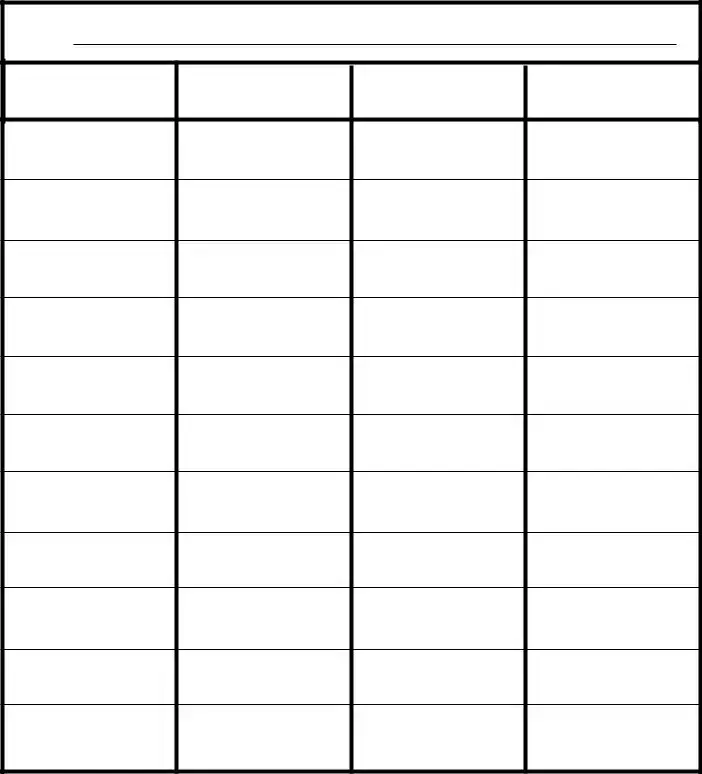What is the purpose of the Four Column Chart form?
The Four Column Chart form is designed to help individuals organize information systematically. It allows users to categorize data under four distinct headings, facilitating better analysis and understanding of the topic at hand.
How should I fill out the headings for each column?
When filling out the Four Column Chart, choose headings that are relevant to the topic you are analyzing. Each heading should reflect a specific aspect of the subject matter. For example, if the topic is a business, headings could include "Strengths," "Weaknesses," "Opportunities," and "Threats."
Can I use the Four Column Chart for any topic?
Yes, the Four Column Chart can be utilized for a wide range of topics. Whether you are working on a business analysis, a research project, or a personal development plan, this chart can help structure your thoughts and present information clearly.
What types of details should I include in each column?
Details in each column should be specific and relevant to the chosen headings. For instance, if one column is labeled "Strengths," you might include key attributes or advantages of the subject. Aim for clarity and conciseness to ensure the information is easily understood.
Is there a specific format I need to follow when filling out the form?
While there is no strict format, it is important to maintain consistency in how you present information. Use bullet points or short phrases to keep details organized and easy to read. Ensure that each entry aligns with the corresponding heading.
How can the Four Column Chart improve my understanding of a topic?
The Four Column Chart promotes critical thinking by encouraging users to evaluate different facets of a topic. By organizing information visually, it helps identify relationships and patterns that may not be apparent in a linear format, thereby enhancing comprehension.
Can I modify the Four Column Chart for my specific needs?
Absolutely. The Four Column Chart is flexible and can be adapted to suit your specific requirements. You can change the headings, add additional columns, or adjust the layout as necessary to better fit the information you wish to analyze.
Where can I obtain a copy of the Four Column Chart form?
The Four Column Chart form can typically be found in educational resources, business planning tools, or can be created using word processing software. Ensure that you have the necessary permissions if using a copyrighted version.

